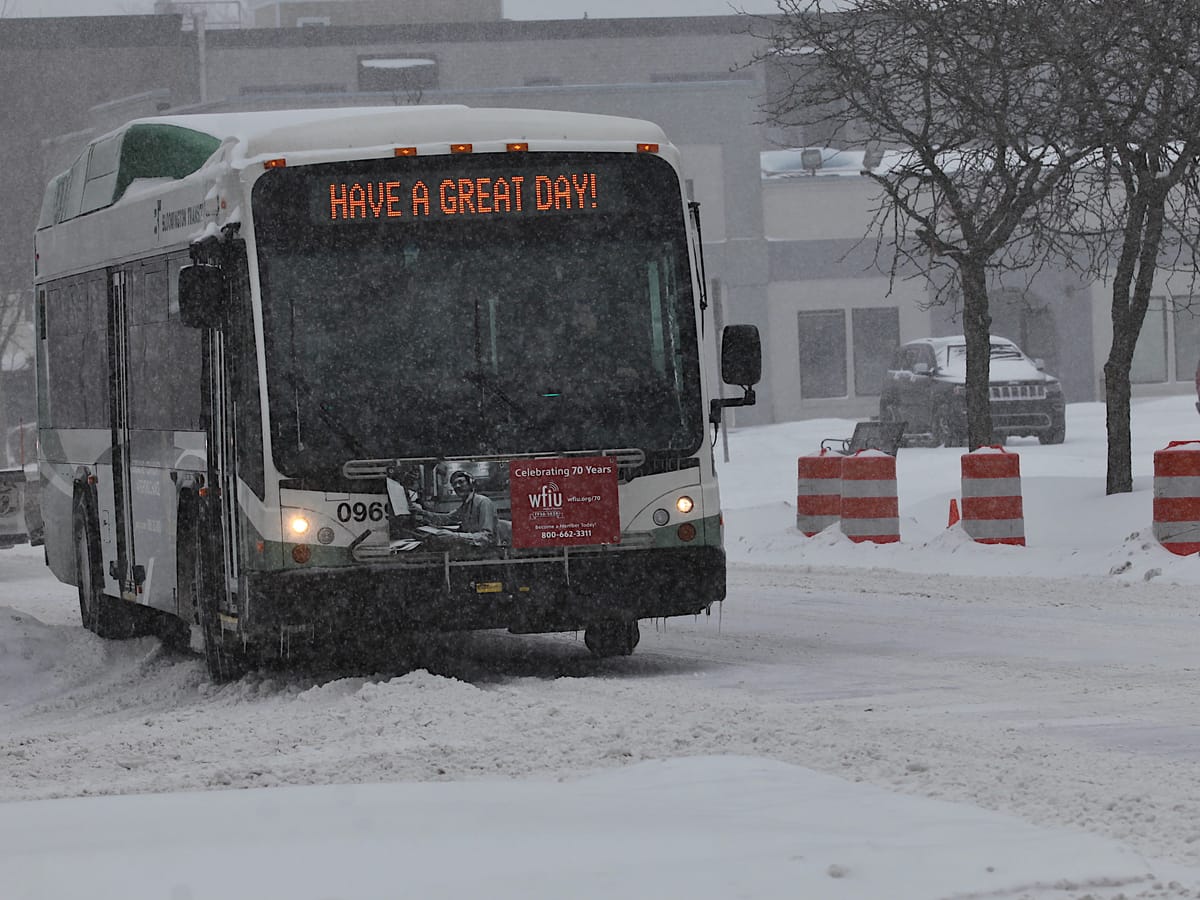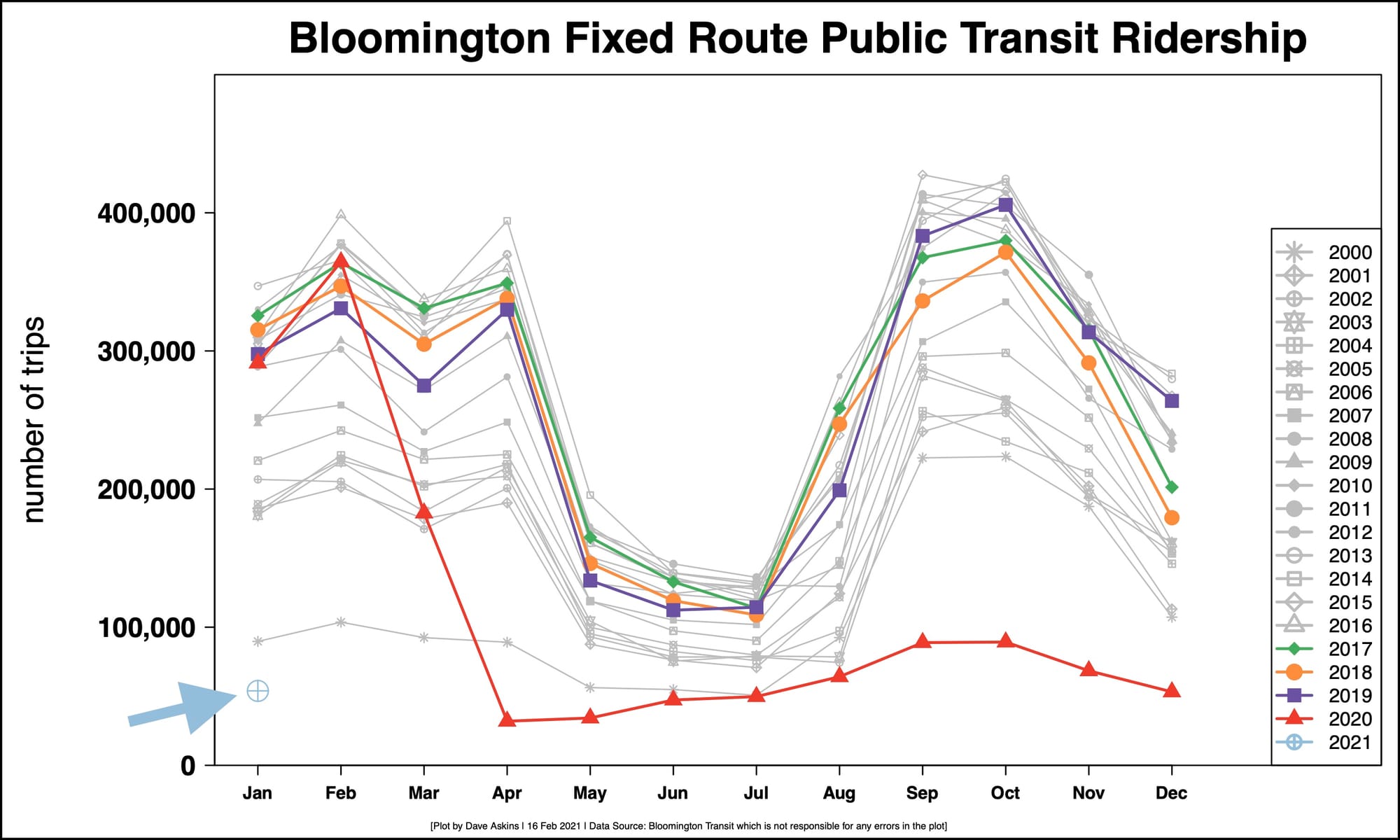Pandemic puts new bus route optimization plan on hold, with possible stopgap alternative for service to new hospital



Bloomington Transit’s new route optimization plan now seems like a long shot to be implemented before the end of the year. That’s based on discussion by BT board members with general manager Lew May at their monthly meeting on Tuesday.
The route optimization plan, with increased frequency on some routes, and some service specifically set up for the new IU Health hospital on SR-46, was originally slated to be rolled out in fall 2020.
The COVID-19 pandemic has pushed that timeframe. It’s not clear when a date for the plan’s implementation might be dialed in. Based on Tuesday’s board discussion with May, about six months of lead time will be needed to put all the pieces in place after a timing decision is made. The pieces include hiring 8 to 12 new drivers and educating the public about the new routes.
It points to a longer-term impact of the COVID-19 pandemic on Bloomington’s public bus system. In the short term, ridership has plummeted and continues to bump along at a fraction of pre-pandemic levels.
In January this year, 53,907 rides were taken on BT fixed route service, which is just 18.5 percent of the 291,236 rides taken in January 2020.
The route optimization plan is based on a consultant’s study done in 2019. It was presented to the public at meetings held in November and December of 2019. The new route configuration was designed to increase ridership.
The route optimization rollout now looks like it could push past two other dates on the calendar. One is the opening of IU Health’s new hospital on SR-46. The other is May’s retirement.
May reported to the board that his best information right now is that IU Health’s transition to the new facility will take place in November 2021.
May’s retirement as general manager had been anticipated last year. He’s served in that position for more than two decades.
But last July, May said he had two main goals for staying on longer. He wanted to stay on through the implementation of the planned new routes, originally scheduled for fall 2020, but delayed due to uncertainty caused by the COVID-19 pandemic. May also said at the time that he wanted to get Bloomington Transit back on its feet after the pandemic. “To me those are two important things that I would not like to just hand off to the next manager,” May said.
The pandemic has now stretched out long enough that May might have to hand off those two items to the next general manager.
Board members expressed some concern about meeting the travel demands related to the new hospital facility, without the planned new route configurations in place. May told the board that one option would be to revise the Route 6 Campus Shuttle or the Route 6 Limited to serve the new hospital.
May also floated another option to serve the new hospital’s transportation needs: microtransit. Unlike fixed-route service, which is provided on regular routes with 40-foot long buses, microtransit provides service much like Uber and Lyft do—with the key difference that other riders can be picked up along the way.
May said the idea would be to open up a microtransit demonstration for the entire city to serve the hospital, until the new fixed route optimized configuration can be rolled out.
Responding to a question from board member Doug Horn, May ticked through some of the challenges to be faced by the next general manager. “I would think a couple of key experience attributes that you’ll be looking for in a new transit manager will be experience with the implementation of major service changes,” May said.
May also suggested the board should look for a next general manager who has experience with alternative fuels. BT is expecting delivery of two electric buses from GILLIG sometime in March or April, May said. “The buses go on the assembly line in March and should be delivered to us either in late March or sometime in April,” he said.
Given the possibility of microtransit as the temporary solution for service to the new hospital, May said the next general manager should have experience with mobility-on-demand modes.
Board member James McLary expressed some frustration that not much progress had been made on finding May’s replacement. No choice has been made between hiring a general manager directly as an employee of BT, or contracting with a third-party management company to provide a general manager.
BT currently contracts with a third-party management company, RATP Dev, which in turn employs May.
On March 2, a special meeting of the BT board is scheduled to review bids for outside legal counsel, which could help provide some guidance in making the choices related to the hire of the next general manager.
McLary said on Tuesday, “I’m getting concerned, just from a timing standpoint, we should have been doing this six months ago. And we’re behind the eight ball.”
At Tuesday’s meeting board members voted to continue BT’s current COVID-19 protocols through March 16. Those protocols include fare-free service and rear-door entry.




Comments ()